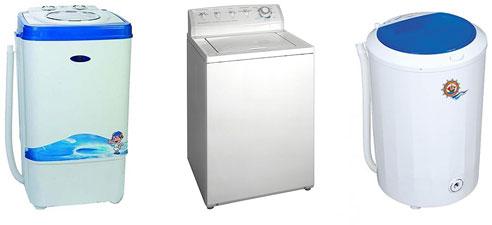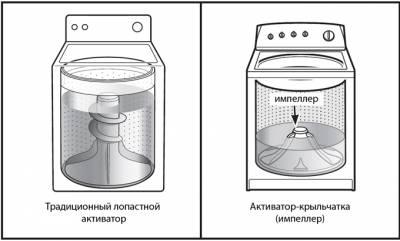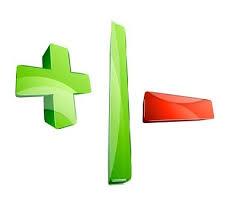Manual washing machines are the favorite companions of summer residents and lovers of total economy. The main advantages for which users are willing to put up with semi-manual labor are savings in electricity, water and unpretentiousness in connecting communications. Such devices are poor in functionality and cost 10 times cheaper than a budget automatic machine.
Types of manual washing machines

The following are exemplary representatives of manual washing machines, since there is no clear classification. The only options that can unconditionally be attributed to the “manual” category are a corrugated washing board or a barrel with washing and spinning mechanisms from the 19th century.
- Semi-automatic washing machines do not have program controls and are often not equipped with drying and rinsing functions. Such devices include the subsection of activator machines. The main difference from all the others is that there is no connection to the water supply, they only require mains power, they usually have two working compartments - for washing and rinsing. Linen from compartment to compartment is transferred manually. The supply and discharge of water is regulated by the user.
- Activator washing machines also belong to the category of manual ones. All washing programs are carried out in one drum.The water supply is done manually. Some models are able to heat water and maintain the temperature.Most often, activator machines do not have a timer and the machine carries out washing until the user disconnects it from the network. Main features - simple design, reliable and durable construction. They are popular with summer residents and pensioners, as the "activators" are unpretentious and can last for decades.
- The foot washing machine is a miniature lightweight device that looks like a barrel with handles. It did not receive wide distribution, as it was developed as a student project for poor countries with severe water shortages. The device does not need to be connected to the mains, consumes a minimum of water. The functionality includes the function of washing, rinsing and even drying. It is enough to fill the tank with water, add detergent and start working with your feet - press the pedal.
The principle of operation of a manual washing machine

Such devices are equipped with a powerful drive and mainly work like a large salad cutter. At the bottom of the device there are blades that rotate and study the laundry. The entire machine usually only needs 3-5 liters to complete a wash cycle. Some models also provide the possibility of rinsing and spinning clothes.
Manual washing machines, unlike drum ones, wash clothes by creating a water vortex, and the latter use the principle of rolling laundry due to gravity. Due to this, the activator principle of operation can be implemented in many ways, depending on additional elements such as pulsators and air-bubble mechanisms.The main difference between semiautomatic machines and automatic machines is that the former have a vertical axis of the drum, the latter have only a horizontal axis of rotation. At the same time, access to the drum is not limited in any way, when the power is turned off, the laundry will not be locked in the machine and the user always has quick access to it.
Advantages and disadvantages

Advantages:
- Waste of time. Manual devices significantly reduce the washing time, since hot water enters the drum directly, most often water heating is not provided. The laundry can be reloaded without interrupting the cycle.
- Saving electricity. Since hot water is supplied directly, an electric heater is not required and energy is only spent on the process of rotating the blades.
- We wash clothes in one sitting. Country models are able to accommodate up to 10-15 kg of laundry per load.
- Increased noise. Manual machines are noisier than automatic machines.
- No vibration. Due to the vertical axis design, the laundry is evenly placed at the bottom of the tub and does not cause vibrations.
- Work in difficult conditions. Unpretentious manual devices work without connection to a water supply system, do not require special conditions for installation, can easily move from place to place.
- Saving water is the main goal. Because of this item, the quality of rinsing and washing sometimes drops. Although modern options have coped with this problem and show more comforting results in the output.
- Wash quality. Here, the machines have succeeded - manual counterparts are significantly inferior in the quality of linen at the exit and cannot work with delicate fabrics.
- Price.The average cost of a semi-automatic ranges from 3-5 thousand rubles, while the most budget automatic machine will cost you 12-14 thousand.
Recall that in addition to manual washing machines, there are more advanced models for summer residents and people living in areas with problematic water supply - this washing machine with water tank.
